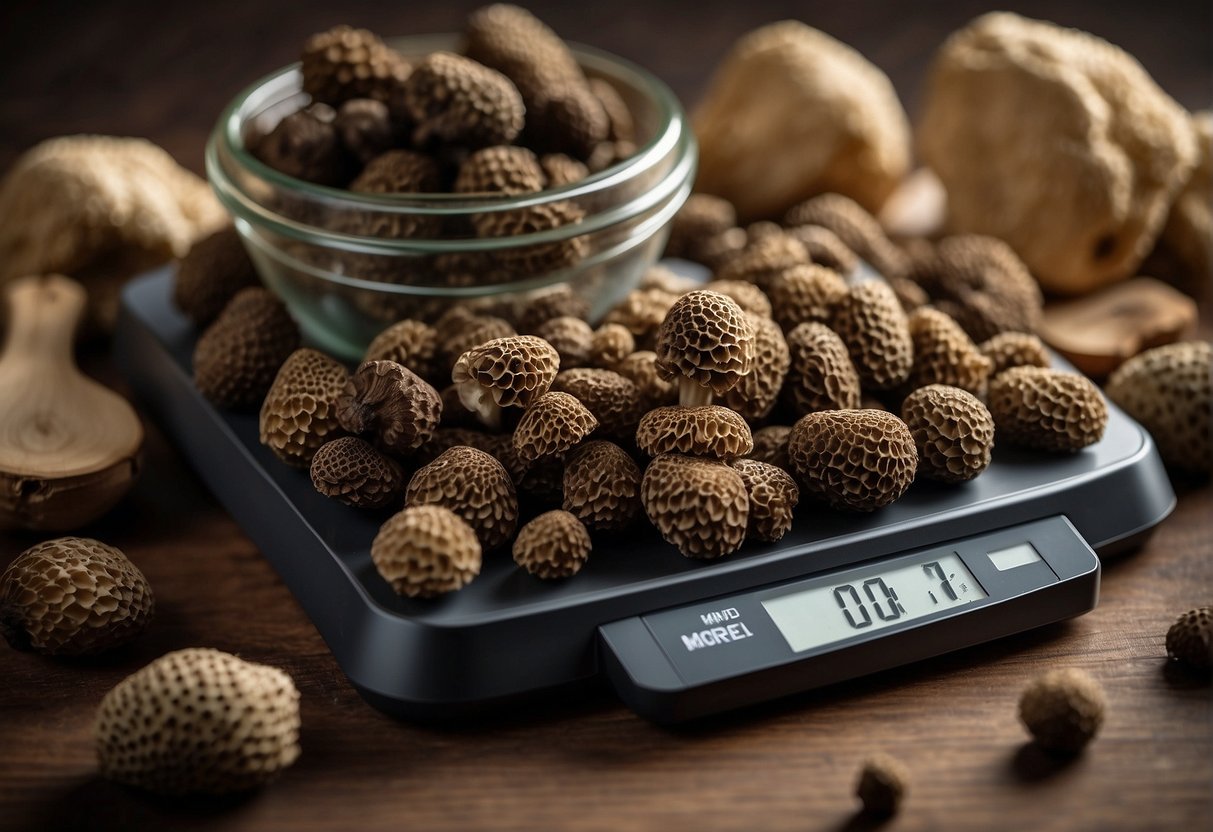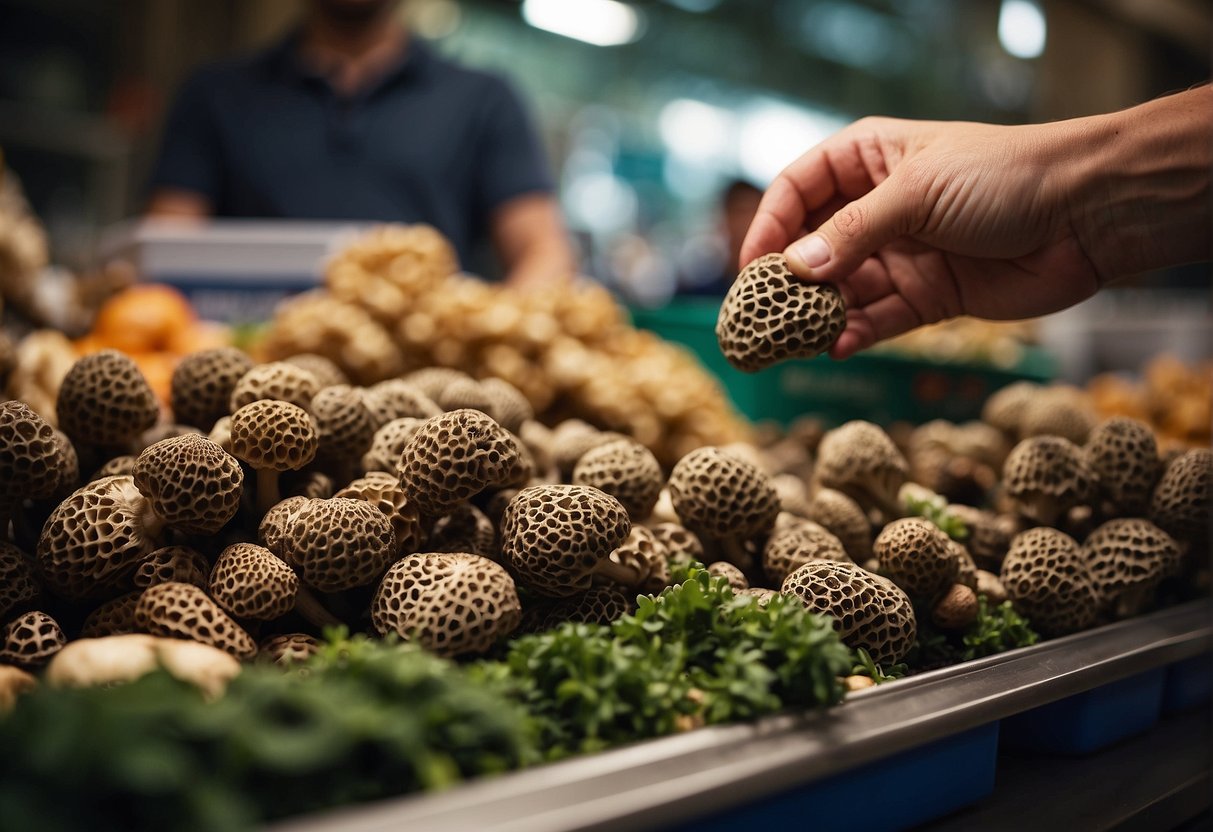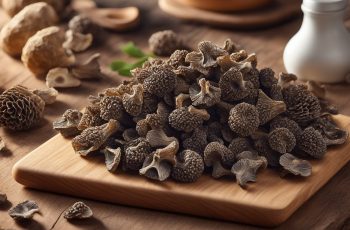Morel mushrooms are a wild treasure, often hidden among the forest’s leafy floor and hunted by those who hold a passion for the outdoors and a penchant for gourmet flavors. Recognized by their distinctive honeycombed caps, these fungi issue a call to adventure as much as they are a call to the dinner table. When you discover the pleasures of morel mushrooms, you’re not just indulging in a unique flavor; you’re savoring a seasonal delicacy that brings a touch of the wild to your palate.

As an outdoorsman, you’ll appreciate not just the hunt but the culinary reward. The cost per pound of morel mushrooms reflects their desirability and the challenges inherent in foraging them. Availability is dictated by the whims of nature, often limited to a brief window in the spring, which elevates their price and status in the culinary world. Yet, their cost is not solely a matter of supply and demand; it’s a testament to their flavor—a smoky, earthy taste that’s hard to replicate and impossible to forget.
Understanding the pricing of morel mushrooms can enhance your appreciation for them, whether you’re a forager proudly returning from the woods or a connoisseur selecting the finest for your table. The value of morel mushrooms encompasses not only their delectable taste but also the rich experience they provide—from the thrill of the hunt to the final savory bite.
Price Factors for Morel Mushrooms
When you’re looking to buy morel mushrooms, several key factors dictate their cost per pound. Understanding these can help you gauge the market and make informed decisions.
Influence of Season and Weather Conditions
The spring season is prime time for morels, making weather conditions crucial to their availability. Morel mushrooms thrive in moist soil and require specific temperatures to grow. A wet spring with adequate warmth can lead to abundance, while a dry or unusually cold season often results in scarcity. This natural rarity influences the price, as morels can only be foraged during a brief window each year.
Supply and Demand Dynamics
The principle of supply and demand is a significant driver of morel mushroom prices. Their seasonality means they’re not always available, and if the year’s harvest is bountiful, prices may be lower due to greater supply. Conversely, in years where morels are sparse, demand exceeds supply, causing prices to spike. As a mushroom hunter, you’ll notice these fluctuations directly impacting cost.
Costs Associated with Harvesting
Morel mushrooms are often found in remote or wild locations, making them labor-intensive to forage. The time and effort put into harvesting by mushroom hunters are factored into the price. Due to the difficulty and expertise required to safely identify and collect these fungi, this is a cost that you’ll see reflected in the market value.
Impact of Quality and Type
Finally, the quality and type of morel mushrooms significantly impact their price. Fresh morel mushrooms are more expensive than dried due to their superior texture and flavor. Additionally, there are different types, such as black morels and yellow morels, each commanding different prices. Higher-quality, fresh morels can fetch a higher price, and many enthusiasts are willing to pay the premium for the best specimens.
Remember, your experience and expertise as an foraging enthusiast can also influence these factors, especially when it comes to locating and identifying the highest quality morels.
Buying and Storing Morel Mushrooms

When you’re looking to purchase morel mushrooms, it’s essential to select fresh, high-quality morels and understand how to properly store them to maintain their distinctive taste and texture. The storage method significantly affects shelf life, which is crucial given the expense of these valued fungi.
Selecting Fresh Morels
When buying morel mushrooms, look for firm specimens that feel weighty in hand; their unique honeycomb-like surface should be free from dampness and not slimy. Fresh morels should have a woods earthy aroma—a sign of their freshness. Remember, always transport them carefully, preferably in a paper bag which allows them to breathe and prevents moisture accumulation, which can lead to spoilage.
Tips for Storing Morels
- In the Refrigerator: For short-term storage, place fresh morels in a paper bag—not plastic—as this will help keep the moisture levels balanced and extend shelf life. They can last for a week to ten days when stored properly.
- For Freezing: After rinsing with cool water and patting dry, store morels in a freezer-safe container. They can be kept frozen for up to six months. Labeling with the date ensures you use them while they’re still at their best.
Comparing Purchasing Options
The market value of morels can vary significantly. You’ll find them at specialty stores, some supermarkets, and at Whole Foods. Restaurants often source fresh morels due to their superior taste and texture, but they can be expensive. Compare prices and consider that dried morels are typically less costly by weight but require rehydration before enjoying their flavor.
Morel Mushrooms in Culinary Use
You may know that morel mushrooms are a treasure in the kitchen, coveted for their earthy and nutty flavor that blends so well with a variety of dishes. Let’s explore how these fungi can elevate your culinary game with their versatility and the nutrition they offer.
Culinary Versatility and Pairings
Morels have a unique flavor profile that imparts a meaty umami quality to dishes, making them a highly sought-after ingredient among chefs and outdoor cooking enthusiasts like yourself. When cooking morels, you can sauté them in butter to enhance their taste, pairing perfectly with ingredients such as garlic and shallots. Morels also complement white wine based sauces, bringing out the complexities of both the wine and the mushrooms.
Cuisines around the world utilize morel mushrooms in various ways. For instance, in French cooking, they’re often a key component in luxurious sauces for meats. Whether you’re preparing a simple pan-fried trout or a hearty venison stew, adding morels can transform your meal. Here’s how you might integrate morels into different dishes:
- Sautéed Morels: Tossed with fresh herbs over a medium flame.
- Morel Risotto: Creamy and rich, perfect for showcasing their flavor.
- Stuffed Morels: Filled with a mixture of cheeses and herbs for a decadent treat.
Nutritional Benefits
Not only do morels tantalize your taste buds, but they’re also good for you. These mushrooms are a significant protein source, which is essential for repairing tissues and creating new molecules in your body. They are rich in fiber, supporting your digestive health, and they contain copper and potassium, two minerals that contribute to cardiovascular health and maintaining nerve functions. Additionally, morels are one of the few natural vitamin D sources, crucial for your bone health and immune system.
Here’s a nutritional breakdown for morel mushrooms:
| Nutrient | Amount per serving |
|---|---|
| Protein | Good source |
| Fiber | Good source |
| Copper | High |
| Potassium | High |
| Vitamin D | High |
Remember to properly identify and source your morels, as they’re a wild product. When you incorporate morels into your cooking, you’re tapping into the wild essence of nature and its health benefits – an experience that’s truly unmatched.


